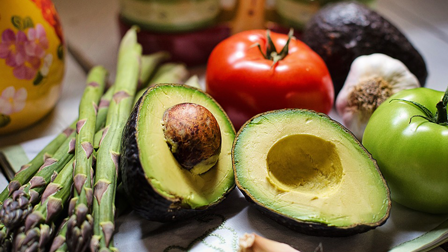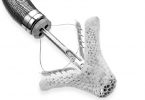Along with the new guidelines for high blood pressure, announced by the American College of Cardiologists (ACC) and the American Heart Association (AHA), comes renewed emphasis on dietary recommendations to help reduce high blood pressure.
One of the top recommendations is to decrease salt intake, which increases sodium in your bloodstream. This reduces your kidneys’ ability to flush out excess water and results in higher blood pressure.
In addition to lowering salt intake, here are more tips from Maureen Kennedy-May, RD, a clinical dietitian at UHS:
 Eat more potassium-rich foods, such as bananas, potatoes, avocados and dark leafy vegetables, which help lessen sodium’s effects.
Eat more potassium-rich foods, such as bananas, potatoes, avocados and dark leafy vegetables, which help lessen sodium’s effects.
 Prepare a heart-healthy dinner and plan an extra portion—sometimes called a leapfrog meal—for tomorrow’s lunch.
Prepare a heart-healthy dinner and plan an extra portion—sometimes called a leapfrog meal—for tomorrow’s lunch.
 Focus on weight loss. Ms. Kennedy-May explains, “As weight comes down, blood pressure comes down.” Generally speaking, weight loss is a two-step process. First, reduce dietary fat, simple sugar and portions. Second, increase activity. According to the Department of Health and Human Services, the recommendation for most healthy adults is at least 150 minutes of moderate aerobic activity or 75 minutes of vigorous aerobic activity weekly, or a combination of moderate and vigorous activity. Before beginning any activity, Ms. Kennedy-May recommends checking with your primary healthcare provider.
Focus on weight loss. Ms. Kennedy-May explains, “As weight comes down, blood pressure comes down.” Generally speaking, weight loss is a two-step process. First, reduce dietary fat, simple sugar and portions. Second, increase activity. According to the Department of Health and Human Services, the recommendation for most healthy adults is at least 150 minutes of moderate aerobic activity or 75 minutes of vigorous aerobic activity weekly, or a combination of moderate and vigorous activity. Before beginning any activity, Ms. Kennedy-May recommends checking with your primary healthcare provider.
 Keep a daily journal of all food and beverages consumed. “Your daily food intake may be surprising when you see it in print,” says Ms. Kennedy-May.
Keep a daily journal of all food and beverages consumed. “Your daily food intake may be surprising when you see it in print,” says Ms. Kennedy-May.
 Find an app that helps monitor food intake. “Apps may not be as effective or accurate as journaling, but they can help,” says Ms. Kennedy-May.
Find an app that helps monitor food intake. “Apps may not be as effective or accurate as journaling, but they can help,” says Ms. Kennedy-May.
 Eat more fresh vegetables. Focus on a variety of veggies, especially locally grown produce if possible.
Eat more fresh vegetables. Focus on a variety of veggies, especially locally grown produce if possible.







